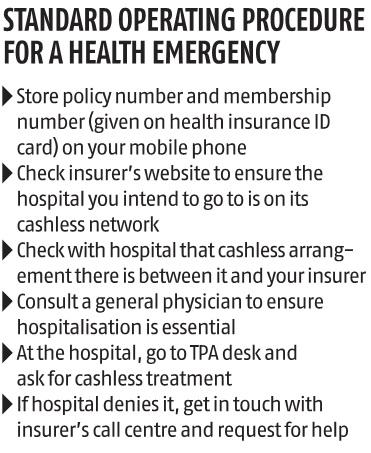 15-04-2021
15-04-2021
Low sum insured, sub-limits give rise to partial payouts

 Insurance Alertss
Insurance AlertssLow sum insured, sub-limits give rise to partial payouts
The data on Covid-related claims collated by the General Insurance Council (GIC) indicate that if a person has a health policy, there is a high probability he will be paid a claim by his insurer. However, the amount he is paid may be lower than his claim.
According to the GIC data, since the start of the pandemic, general and health insurers have received 1.01 million Covid-related claims, amounting to more than Rs 14,800 crore (until April 10). Of this, they have settled 865,968 claims worth Rs 7,956 crore. While a large percentage of claims has been settled in number terms (85.4 per cent), the percentage settled in value terms is low (53.8 per cent).
Inadequate sum insured
Insurers say there are several reasons why the percentage of claims settled in value terms is low. “Sometimes, the customer has a low sum insured. The average claim size for Covid tends to be high. But he can only be paid up to the sum insured,” says Bhabatosh Mishra, director-underwriting, products and claims, Max Bupa Health Insurance Company.
Product-specific restrictions also limit the payout. “Many older policies come with room-rent caps,” says Amit Chhabra, head-health business, PolicyBazaar. In some policies, caps also exist on procedures, doctor’s fee, intensive care unit charges, etc. In Covid cases, consumables like personal protective equipment kits account for a higher percentage of the bill than the normal 8-10 per cent. “Some policies pay for consumables, others don’t,” says Chhabra.
Tariff rates have been set by many state governments or their state medical councils. “Insurers say they will pay the tariff rate. If hospitals bill at a higher rate, the insurers refuse to pay up,” says Kapil Mehta, co-founder and managing director, SecureNow Insurance Broker.

Sometimes, insurers question the need for hospitalisation. Disputes also arise over the treatment protocol. Insurers are only willing to pay for standard, proven treatment protocols.
Check policy features
With a pandemic raging, Mishra suggests you should ensure you have an adequate sum insured (Rs 20 lakh and above). This is also a good time to revisit the features of your policy. “Check if your policy has caps, co-payment or deductible requirements,” says Chhabra.
Co-payment and deductible both mean the patient must foot a portion of the bill (the former is stated in percentage terms, the latter as an absolute amount). Make a list of the quality hospitals in your vicinity that are part of your insurer’s cashless network. If in haste you go to a non-network hospital, you will have to pay the bill yourself and get it reimbursed later. In the reimbursement route, insurers tend to ask more questions and demand documents.
If you fear the insurer could raise questions regarding whether hospitalisation was essential, Mehta suggests you get a written statement from your doctor stating it was. If a new treatment protocol, like plasma therapy, was employed, again, get a similar statement from your doctor.
Build a liquid corpus
Since patients may have to foot a portion of the bill themselves, building an emergency corpus is a must. “First, your spouse and you should each be able to access at least 1 per cent of your combined net worth across savings account balance, single-name fixed deposits, and unused credit card limit. Second, each of you should be able to access at least 5 per cent of your combined net worth within a week,” says Avinash Luthria, founder and investment advisor, Fiduciaries.
Source: Business Standard
